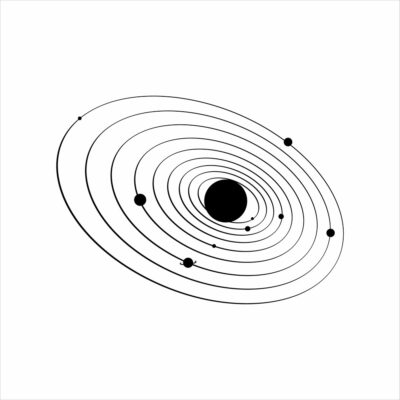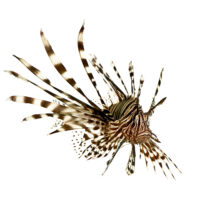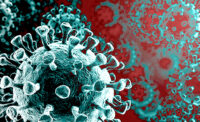by Richard William Nelson | Aug 20, 2025

Time is the fourth principle driving Charles Darwin’s theory of evolution, “by means of natural selection.” As with the other four principles, time—specifically, the timeframes of Earth’s history—challenges Darwin’s theory of “slight, successive” changes.
The theory of natural selection is contingent on extended periods of time. In The Origin of Species, Darwin wrote –
“I do believe that natural selection will generally act very slowly, only at long intervals of time.”
Continue Reading
by Richard William Nelson | Feb 19, 2025

Charles Darwin envisioned life on Earth as developing over long periods of time through natural selection. In The Origin of Species, Darwin varyingly restated his vision, for example –
“I do believe that natural selection will generally act very slowly, only at long intervals of time.”
Time is the fourth of natural selection’s five principles, developed by Niles Eldredge (pictured right below) at the American Museum of Natural History. He encapsulated these five principles in the acronym V.I.S.T.A.
Continue Reading
by Richard William Nelson | Sep 7, 2024
 Selection is the third of the five principles of natural selection, abbreviated as V.I.S.T.A. Selection acts to bring things together, as recently observed in the water flea (pictured left).
Selection is the third of the five principles of natural selection, abbreviated as V.I.S.T.A. Selection acts to bring things together, as recently observed in the water flea (pictured left).
Selection is the core function of natural selection.
Niles Eldredge (pictured right below), paleontologist at the American Museum of Natural History, formulated the V.I.S.T.A. acronym to outline Charles Darwin’s five principles. While selection is Darwin’s most core principle, it is also the most controversial of the five.
Continue Reading
by Richard William Nelson | Jul 13, 2023
 Evolution centers on offering a natural explanation to account for Earth’s vast and diverse biosphere. A core measure of evolution is the concept of species, the prime number of evolution. The importance of the concept is highlighted in the title of Charles Darwin’s bestseller —
Evolution centers on offering a natural explanation to account for Earth’s vast and diverse biosphere. A core measure of evolution is the concept of species, the prime number of evolution. The importance of the concept is highlighted in the title of Charles Darwin’s bestseller —
“On the Origin of Species by Means of Natural Selection”
One of modern biology’s principal functions includes the naming, grouping, and defining of species. However, exploring the history of the term opens a fascinating window into the checkered history of Darwin’s theory of natural selection.
Continue Reading
by Richard William Nelson | Jan 3, 2023
 Mendel rescued Darwin’s theory of natural selection early in the twentieth century – to a point.
Mendel rescued Darwin’s theory of natural selection early in the twentieth century – to a point.
By the end of the nineteenth century, Charles Darwin’s influence had continued to deteriorate, stemming from his obsolete theory of inheritance.
In the search for a scientifically valid theory, scientists, early in the twentieth century, rediscovered Gregor Mendel’s genetic inheritance theory, which had been published thirty years earlier.
Mendel’s theory delivered what Darwin missed – a scientifically valid theory of inheritance capable of driving evolution.
Continue Reading
by Richard William Nelson | Nov 8, 2022

Inheritance is the second of the five principles of natural selection, abbreviated as V.I.S.T.A. Niles Eldredge, a paleontologist at the American Museum of Natural History, formulated the acronym to understand Darwin’s theory of evolution.
For the museum’s Darwin exhibit, Eldridge uses the acronym to explain how the principles of variation, inheritance, selection, time, and adaptation drive natural selection. Inheritance is the second principle of Charles Darwin’s concept of natural selection.
In 1837, nearly twenty years before publishing The Origin of Species, Darwin drew his first sketch linking species by inheritance (pictured left).
Continue Reading
by Richard William Nelson | Aug 17, 2022

Variation is the first of the five principles of natural selection, abbreviated as V.I.S.T.A. Niles Eldredge, a paleontologist at the American Museum of Natural History, formulated the acronym to understand Darwin’s theory of evolution.
For the museum’s Darwin exhibit, Eldridge uses the acronym to explain how the principles of variation, inheritance, selection, time, and adaptation drive natural selection. Variation is the first principle of Charles Darwin’s concept of natural selection.
Continue Reading
by Richard William Nelson | May 27, 2022
 Logic and science play crucial roles in understanding how nature works. Importantly, however, there are distinct types of logic and methods in science. Selecting the appropriate type of logic and science is crucial for developing scientifically valid explanations.
Logic and science play crucial roles in understanding how nature works. Importantly, however, there are distinct types of logic and methods in science. Selecting the appropriate type of logic and science is crucial for developing scientifically valid explanations.
Charles Darwin applied various logic and scientific methods in his life-long quest to explain how Earth’s biosphere works. The story of his quest is fascinating, giving insight into how the interplay of logic and science still influences modern evolution research.
Continue Reading
by Richard William Nelson | Jan 13, 2022
 Three years into the pandemic, the origin of COVID-19 is still controversial. Two leading theories are under investigation: natural selection process or genetically engineered – each with vastly different implications. The phylogenetics of coronaviruses is the key to the COVID-19 origin dilemma and gaining insights into the theory of evolution.
Three years into the pandemic, the origin of COVID-19 is still controversial. Two leading theories are under investigation: natural selection process or genetically engineered – each with vastly different implications. The phylogenetics of coronaviruses is the key to the COVID-19 origin dilemma and gaining insights into the theory of evolution.
Coronaviruses are RNA, not DNA viruses. RNA viruses are associated with causing the common cold, influenza, mumps, and measles; coronaviruses in humans can cause respiratory tract infections ranging from no symptoms, mild symptoms to a cytokine storm resulting in organ failure and death in humans.
Continue Reading
by Richard William Nelson | Mar 31, 2021

The platypus puzzles naturalists and scientists alike. While its bizarre characteristics seem to defy a natural explanation, the platypus may be a classic transitional link. Like a reptile, it lays eggs, yet, it nurses with milk without nipples. As one of the least understood living mammals, and unlike any other known species, it has ten sex chromosomes. The platypus produces venom, like a reptile, and uses electroreception, like a shark – a puzzle known as the platypus paradox dilemma.
That’s not all; the list of oddities goes on. To gain an understanding of this evolution icon, scientists have long-awaited insights from its genome. This January’s journal Nature reports on the most comprehensive investigation of the platypus genome ever performed.
Continue Reading





 Mendel rescued Darwin’s theory of
Mendel rescued Darwin’s theory of 


 Three years into the pandemic, the origin of
Three years into the pandemic, the origin of 
